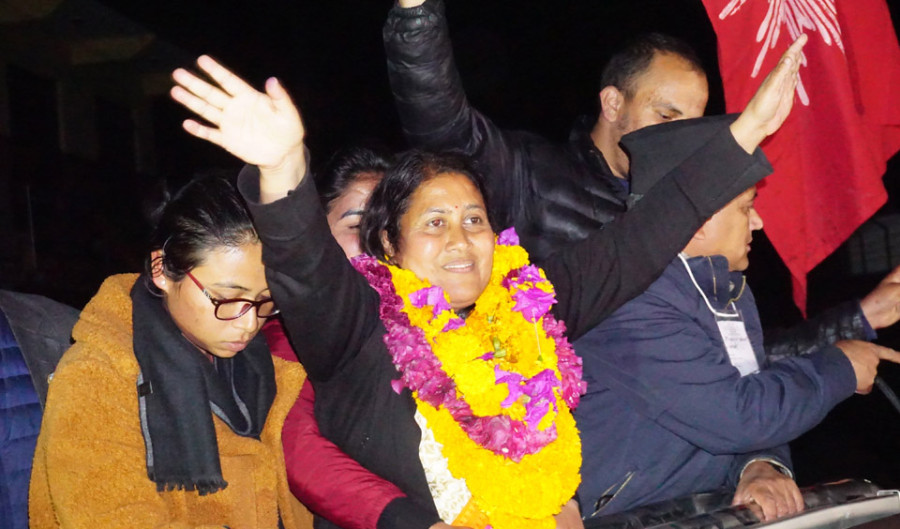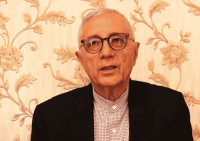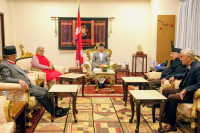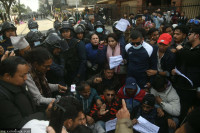Politics
In by-election results, ruling party's popularity declines but opposition is unable to capitalise
Contesting polls for the first time as a unified party, the Nepal Communist Party should’ve won even more seats, but it failed to perform as expected, analysts say.
Anil Giri
With the by-election results coming in, the ruling Nepal Communist Party and the opposition Nepali Congress have begun to take stock of how their candidates performed to gauge the political temper. The results have sent a mixed message to both the ruling party and the opposition, according to analysts. The by-elections have been largely seen as a mid-way litmus test for the parties.
The Nepal Communist Party (NCP) needs to work extra hard to maintain its credibility and popularity while the Nepali Congress needs to transform itself if it wants to maintain its relevance, leaders from both parties told the Post.
When the 2017 elections were held, the Nepal Communist Party had not yet been formed and the UML and the Maoists both contested the elections separately, though as an alliance. These by-elections are the first polls that the newly unified Nepal Communist Party is contesting.
“Since the by-elections are being conducted after the unification of the two communist parties, they must own more seats,” said Shyam Shrestha, a political analyst who follows leftist politics in Nepal. “But they were unable to retain all their seats, which means that the performance of the government is not satisfactory.”
The Nepal Communist Party did fairly well in Kaski, Dang, Panchthar, Mahottari, and Sankhuwashabha but lost its provincial seat and some of its wards to the Nepali Congress in Bhaktapur. It retained its Kaski-2 seat in the House of Representatives, with Bidhya Bhattarai, the widow of the late Rabindra Adhikari, winning with a significant margin over the Nepali Congress’ Khemraj Poudel.
The Nepali Congress took a provincial seat in Bhaktapur and three wards in Chitwan from the Nepal Communist Party. Out of 43 ward seats, the ruling party secured 24, the Nepali Congress 12, Samajbadi Party four, and Rastriya Janata Party three seats. In the Madhes, both the Samajbadi Party Nepal and Rastriya Janata Party Nepal continued their dominance at the local level.
“The election results in Bhaktapur surprised us and we will convene a meeting to evaluate the results,” said Nepal Communist Party General Secretary Bishnu Poudel. “But we have retained several seats at the ward level and some new rural municipalities so the results are encouraging.”
Poudel maintained that the ruling party’s popularity had not waned and that it had managed to secure the popular vote.
“If the government was unpopular, the opposition would have won more seats but the results did not favour the opposition party either,” he said.
However, some ruling party insiders do not agree with Poudel’s assessment.
“We lost the elections in Baitadi, Dang, Chitwan, Sarlahi and Arghakhachi where the ruling party lost seven wards,” said Surya Thapa, ruling party leader and Prime Minister KP Sharma Oli’s press advisor. “We owned those seats when we contested separately, but today, despite being united, we lost. I don’t know what went wrong.”
Some ruling party leaders said that factionalism within the ruling party could have manifested in the election results. Former Maoist leader Devi Prasad Dhungel’s loss in Bhaktapur is a manifestation of this internal division, said some leaders.
“One faction thinks it is superior to the other,” said Ram Prasad Sapkota, a central committee member. “This hierarchical tendency clearly shows in the elections.”
While the opposition Nepali Congress won some seats at the ward level and in Bhaktapur, its results were not stellar either.
“To us, the message is clear,” said party spokesperson Bishwa Prakash Sharma. “We have to transform and correct ourselves.”
Sharma said that they had managed to reduce the vote margin in several areas and had won seats in leftist banks like Chitwan and Dang. This shows that the popularity of the government is diminishing, he said.
Although the Nepal Communist Party and the Nepali Congress continued to dominate the elections, the smaller, regional parties managed to carve out niches for themselves. However, these parties did not manage to achieve a significant hold in the system, which, analysts say, shows that the country is increasingly heading towards a two-party system.




 18.12°C Kathmandu
18.12°C Kathmandu















